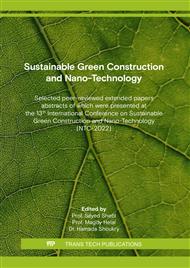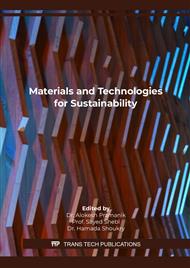p.191
p.207
p.217
p.231
p.239
p.247
p.259
p.271
p.283
Experimental Study of RC Column Strength Restoration after Core Drilling Using Different Strengthening Techniques
Abstract:
This paper presents an experimental study to investigate the effect of core drilling on the Reinforced Concrete (RC) column capacity. It also discusses how to restore the drilled RC column capacity. The experimental work consists of seven half-scale short rectangular concrete columns with cross section in width and depth equal to 160 and 300 mm, respectively. All specimens have the same column total and clear height which is equal to 1900 and 1300 mm, respectively. On loading at 40% of column load capacity, the core has been taken to stimulate what happens in nature where core is drilled in buildings. The discussion presents the different strengthening techniques for the core drilling zone to restore the un-voided column capacity, strengthen techniques such as using Carbon Fiber Reinforcement Polymer (CFRP) and anchored steel plates. The study showed good agreement of the results. Finally, recommendations are given for the reduction in the RC column load carrying capacity under the effect of core hole.
Info:
Periodical:
Pages:
271-282
Citation:
Online since:
May 2022
Keywords:
Price:
Сopyright:
© 2022 Trans Tech Publications Ltd. All Rights Reserved
Share:
Citation:



